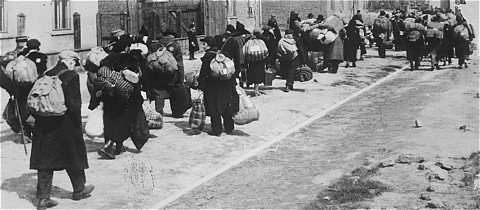
An Overview of the Holocaust: Topics to Teach
Recommended resources and topics if you have limited time to teach about the Holocaust.
Rationale
When teaching the history of the Holocaust, the complexity of the subject matter can often seem daunting or challenging for educators. Teaching the Holocaust requires contextualizing the events of the Holocaust within many different strands of history. To understand how individuals and organizations behaved at the time, students need to know a number of key concepts and information. Below are recommended resources and topics to address when planning lessons or units on the Holocaust.
The objective of teaching any subject should always be to engage the intellectual curiosity of students in order to inspire critical thought and personal growth. With this in mind, it also is helpful to structure a lesson plan on the Holocaust by considering your main goals and purposes for teaching the subject matter. Find more information on how to craft learning objectives for teaching the Holocaust.
Historical Background
The Path to Nazi Genocide provides general background information on the Holocaust for the instructor and for classroom use.
This 38-minute film examines the Nazis’ rise and consolidation of power in Germany. Using rare footage, the film explores their ideology, propaganda, and persecution of Jews and other victims. It also outlines the path by which the Nazis and their collaborators led a state to war and to the murder of millions of people. By providing a concise overview of the Holocaust and those involved, this resource is intended to provoke reflection and discussion about the role of ordinary people, institutions, and nations between 1918 and 1945.
View The Path to Nazi Genocide.
This film is intended for adult viewers, but selected segments may be appropriate for younger audiences. The final 8 minutes of the film present very graphic material.
There is a worksheet with an answer key to go along with the film. Many of these questions could be used as discussion questions in class. Additionally, there is a one-day lesson that provides an introduction to the Holocaust by defining the term and highlighting the story of one Holocaust survivor, Gerda Weissmann.
Accessibility
To make the content of the Holocaust Encyclopedia more broadly available, many materials have been translated into various languages. Please select your language by using the globe icon.
The Holocaust Encyclopedia also provides a glossary for students.
Audio Narrations of Holocaust Encyclopedia Articles
The Holocaust Encyclopedia offers over 70 human-read audio versions of its most popular articles and topics, including articles from "The Holocaust: A Learning Site for Students." Check out the list of Learning Site articles with audio below or find our full list of audio narrations here.
Context for Understanding the Holocaust
The encyclopedia articles below provide background and more context on the Holocaust.
General
- Antisemitism
- Jewish life in Europe before the Holocaust
- World War I
- Nazi Rise to Power
- Introduction to the Holocaust
1933-1939
1939-1945
- World War II in Europe
- Murder of the Disabled (Euthanasia Program)
- Persecution and Murder of Jews
- Ghettos
- Mobile Killing Squads (Einsatzgruppen)
- Expansion of the Concentration Camp System
- Killing Centers
- Additional Victims of Nazi Persecution
- Jewish Resistance
- Non-Jewish Resistance
- Rescue
- United States
- Death Marches
- Liberation
Post-1945
If You Have One Class Period
Provide a historical overview of the history through use of the Path to Nazi Genocide film or other materials. Or refer to the one-day lesson, which provides an introduction to the Holocaust by defining the term and highlighting the story of one Holocaust survivor, Gerda Weissmann.
Based on your rationale, choose one or more topics to highlight. Include personal testimonies from the Museum's ID Cards or oral history excerpts as appropriate.
Critical Thinking Questions
The most visited articles in the Holocaust Encyclopedia include critical thinking questions to encourage reflection on connections to contemporary events and genocide prevention, analysis of the range of motivations and behaviors, and further research on key topics.
The following are examples of articles with critical thinking questions. You'll find these questions at the foot of each page:
Discussion Questions
A set of Discussion Questions aim to provide a framework for understanding how and why the Holocaust was possible.
What made it possible?
- What conditions and ideas made the Holocaust possible?
- How and why did ordinary people across Europe contribute to the persecution of their Jewish neighbors?
- How did German professionals and civil leaders contribute to the persecution of Jews and other groups?
- How did the Nazis and their collaborators implement the Holocaust?
- What does war make possible?
Responses
- How did the United States government and American people respond to Nazism?
- How did leaders, diplomats, and citizens around the world respond to the events of the Holocaust?
- Which organizations and individuals aided and protected Jews from persecution between 1933 and 1945?
After the war
- How did postwar trials shape approaches to international justice?
- What have we learned about the risk factors and warning signs of genocide?
Other topics
- How did the shared foundational element of eugenics contribute to the growth of racism in Europe and the United States?
- What were some similarities between racism in Nazi Germany and in the United States, 1920s-1940s?
- How did different goals and political systems shape racism in Nazi Germany and the United States?

